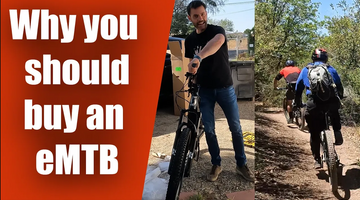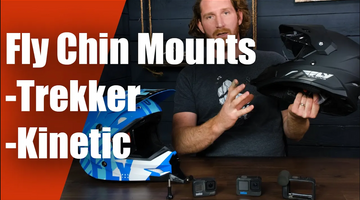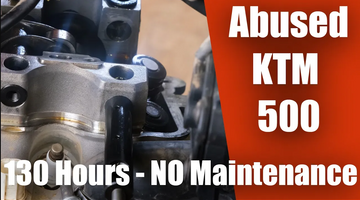Ben Franklin once said that the only things certain in this life are death and taxes. Obviously Ben has never ridden a dirtbike, because he would have added the certainty of needing to change your brake pads to the list right after the part about hitting the rut you were trying to avoid.
In our case, the pads in question are on a 2010 KTM 300 XCW, and we are going to walk you through how to not only change them, but how to bleed the brakes as well.
The tool list is pretty short for this one, with a pair of pliers, a length of ¼” tubing, a flathead screwdriver, an 8mm box end wrench, and a crescent wrench. You will also need the appropriate brake pads and some fresh brake fluid, plus a pan or other receptacle to drain brake fluid into.

The first step is to locate the brake reservoir near the front part of the swingarm and remove the filler bolt. This gives the fluid somewhere to go when you push the caliper in…more on that later.

After that, move to the caliper and you will see a cotter pin that is the safety net for the whole pad system. Pluck that out with your needle-nose pliers and set it aside. From there, you can push out the pin that holds your pads in place. We like to do the pads one at a time, as there is a metal friction plate that sits on the top of the caliper. This plate is held in place by the pads, so removing both at the same time eliminates the entire support network for this essential piece and it makes more work for you in the long run.
Using your screwdriver, pry back on the pad a little bit to compress the piston, taking care to not mar the braking surface. This gives the new pad almost enough room to be seated correctly. Slide the corresponding new pad into place, giving it a wiggle to compress the piston the last little bit for the new pad to fit. The old second pad should slide out with ease at this point, and the new pad should also take its rightful place with minimal effort. Once the pads are in place you can then slide the pin back from the inside making sure that it goes through the rings on the new pads. Don’t forget to secure it with the cotter pin. Pumping the rear brake lever a few times will get the pads snug, and then it is time to get any air that might have crept in out of the lines.

Back on the caliper you will see a little piece of rubber covering the bleeder nipple. Pull the rubber cap off and slide the rubber tube onto the nipple. With the tube aimed into the previously sourced drain pan, take the 8mm wrench and break the thread loose.
Press down on the brake lever and open and close the bleeder valve with the 8mm wrench, making sure to keep constant pressure on the brake lever. This assures that no air will sneak into the bleeder valve. Repeat this process until you see fluid coming out of the tube. You will want to top off the reservoir with fresh fluid from a sealed can as you go, otherwise you risk adding air into the system.

If you are looking to only make sure that you have no air bubbles, you will only need to do this until you notice that there are no bubbles, or if you are like us you will want to flush out the old fluid and start fresh.
When you have achieved the appropriate level of brake bleeding/ fluid change tighten the bleeder valve and then it is time to reinstall the reservoir filler cap nut.
You will notice that the filler cap has a plastic or rubber bladder attached to it. This bladder allows for a constant level of fluid to be in the system at all times while your brake pads wear, keeping air out of the system.
When reinserting the bladder into the reservoir, you will want to make sure that you don’t have too much fluid in place otherwise it will overflow. If it looks like you have too much fluid in the reservoir, you can always bleed a little more out before inserting the bladder. If you are unsure, a little overflow doesn’t hurt anything, and cleaning a little fluid off the swingarm and/or floor is much easier than re-bleeding the brakes.
With the bleeder valve and reservoir cap snugged back into place, you are free to go shred your favorite bit of single track, no doubt wondering if Ben Franklin would have been faster than you.
(He wouldn’t have, you’re a beast out there)









